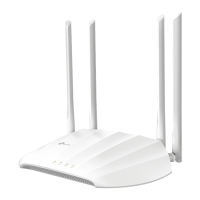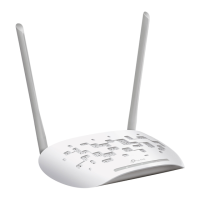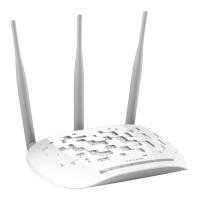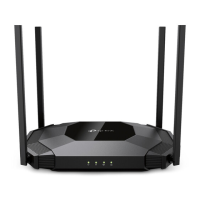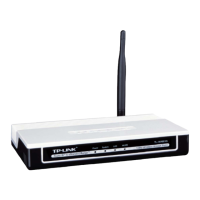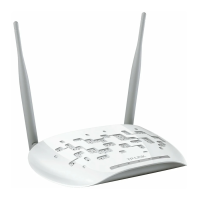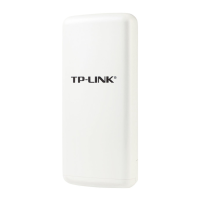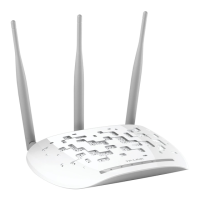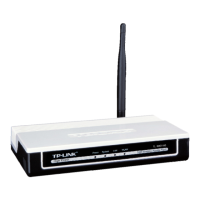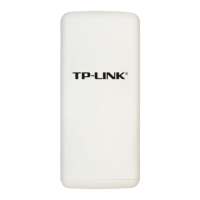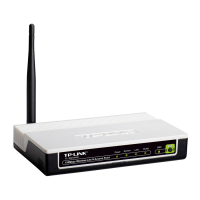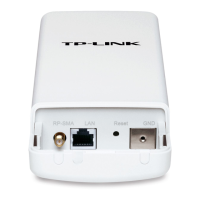Do you have a question about the TP-Link TL-WA1801 and is the answer not in the manual?
Details the TP-Link access point's function in establishing or expanding wireless networks and connecting devices.
Describes the physical components, ports, buttons, and LED status indicators of the access point.
Guidance on optimal placement of the access point for reliable connectivity and safety, including wall mounting.
Instructions for setting up the access point in Access Point, Range Extender, Client, and Multi-SSID modes.
Steps to create and register a new TP-Link ID for remote management via the Tether app.
Procedure to update the email address and password associated with your TP-Link ID account.
How to add or remove other TP-Link IDs to manage the access point as Admin or User roles.
Instructions for downloading, installing, and using the TP-Link Tether app for remote device management.
Customizes wireless network names (SSIDs), passwords, security options, and transmit power for different bands.
Explains how to use Wi-Fi Protected Setup (WPS) for secure and simple client connections via PIN or button.
Allows checking and adjusting advanced wireless parameters like WMM, AP Isolation, and Airtime Fairness.
Displays data statistics for connected wireless clients, including received and sent bytes.
Visualizes current network data traffic through a throughput chart for different wireless bands.
Enables and configures a captive portal for guest Wi-Fi, including authentication, timeout, redirection, and login page customization.
Allows blocking or allowing specific client devices from accessing the network using a blacklist or whitelist.
Procedure to modify the Local Area Network (LAN) IP address, subnet mask, and gateway settings.
Configuration options for the DHCP server, including IP address pool, lease time, and DNS settings.
Setting system time, language, controlling LEDs, configuring SNMP, and updating firmware.
Securing the device by changing login passwords and implementing password recovery options.
Managing device state through configuration backup, rebooting, testing connectivity, and reviewing system logs.
Details the TP-Link access point's function in establishing or expanding wireless networks and connecting devices.
Describes the physical components, ports, buttons, and LED status indicators of the access point.
Guidance on optimal placement of the access point for reliable connectivity and safety, including wall mounting.
Instructions for setting up the access point in Access Point, Range Extender, Client, and Multi-SSID modes.
Steps to create and register a new TP-Link ID for remote management via the Tether app.
Procedure to update the email address and password associated with your TP-Link ID account.
How to add or remove other TP-Link IDs to manage the access point as Admin or User roles.
Instructions for downloading, installing, and using the TP-Link Tether app for remote device management.
Customizes wireless network names (SSIDs), passwords, security options, and transmit power for different bands.
Explains how to use Wi-Fi Protected Setup (WPS) for secure and simple client connections via PIN or button.
Allows checking and adjusting advanced wireless parameters like WMM, AP Isolation, and Airtime Fairness.
Displays data statistics for connected wireless clients, including received and sent bytes.
Visualizes current network data traffic through a throughput chart for different wireless bands.
Enables and configures a captive portal for guest Wi-Fi, including authentication, timeout, redirection, and login page customization.
Allows blocking or allowing specific client devices from accessing the network using a blacklist or whitelist.
Procedure to modify the Local Area Network (LAN) IP address, subnet mask, and gateway settings.
Configuration options for the DHCP server, including IP address pool, lease time, and DNS settings.
Setting system time, language, controlling LEDs, configuring SNMP, and updating firmware.
Securing the device by changing login passwords and implementing password recovery options.
Managing device state through configuration backup, rebooting, testing connectivity, and reviewing system logs.
| 2.4 GHz | Yes |
|---|---|
| Frequency band | 2.4 - 5 GHz |
| Networking standards | IEEE 802.11a, IEEE 802.11ac, IEEE 802.11ax, IEEE 802.11b, IEEE 802.11g, IEEE 802.11n |
| Maximum data transfer rate | 1201 Mbit/s |
| Maximum data transfer rate (2.4 GHz) | 574 Mbit/s |
| Security algorithms | SNMP, WPA, WPA-Enterprise, WPA2, WPA2-Enterprise, WPA3 |
| Service Set Identifier (SSID) features | Multiple SSIDs |
| Supported protocols | IPv4, IPv6 |
| Ethernet LAN (RJ-45) ports | 1 |
| Input current | 0.375 A |
| DC voltage range | 48 V |
| Power over Ethernet (PoE) type supported | Passive PoE |
| Placement | Table |
| Product color | White |
| Antenna type | External |
| Antennas quantity | 4 |
| Cables included | LAN (RJ-45) |
| Number of products included | 1 pc(s) |
| Operating temperature (T-T) | 0 - 40 °C |
| Operating relative humidity (H-H) | 10 - 90 % |
| Sustainability certificates | Federal Communications Commission (FCC), RoHS |
| Depth | 145.5 mm |
|---|---|
| Width | 225 mm |
| Height | 37 mm |
